Powerhouse, award-winning author in various genres, Lee Horikoshi Roripaugh, discusses the publication of her poetry collection “tsunami vs. the fukushima 50” which was named a “Best Book of 2019” by the New York Public Library and selected as a poetry finalist in the 2020 Lambda Literary Awards and her connections between writing and teaching.
I had the pleasure of speaking with Roripaugh Lee Horikoshi Roripaugh in a small deli with a view of Kenyon College’s Middle Path during a visit to Gambier for a reading of her work.
CS: When you are traveling back and forth between work, conferences, etc., do you find that changing location influences your writing in some way — whether it is in your practice or the writing itself?
LHR: Yes. It’s interesting to be somewhere else because things are so different and you notice new things. In “Reveal Codes,” some of the stories are set in a fictional place, but I still feel like I take inspiration from my environment. A change of place impacts this.
CS: How does teaching impact your writing?
LHR: There’s an incredible energy working with students. There’s a level of trust, too. To be entrusted to read someone’s creative work is really a gift. To work with pieces that are still developing is exciting. It can move into so many forms and directions, and to think about it with curiosity, hopefulness, and anticipation is invigorating.
CS: Because you work in different genres, do you notice the process being different for each form?
LHR: I mean, it’s different, but it’s the same. Form feels like a frame for me, or a kind of architecture. As a writer, I don’t always decide ‘Oh, I’m going to write a poem about this’ unless I am deep into a book and I’ve already figured out what I’m doing and know the contours of it.
I’m not always sure if it’s going to be a poem, an essay, or a story. It’s like being a hermit crab, finding the shell that suits it the best. When I have a sense of form and content working reciprocally and well with one another, then I hone in on it, which seems to be the form.
Sometimes, I have content that ends up in very different incarnations. I might have an essay and a story that overlap, but it might not be apparent to me when writing. But each piece grows into its shell or frame very differently.
CS: Is there a form or style you feel most drawn to?
LHR: I like to envision different formal changes with me for each book because I think that changes the different timbre or flavor of the piece. There’s the notion in writing that you need to ‘find your voice,’ but I think the harder thing is to shake your voice. I don’t want to lose the tics or obsessions that are like my fingerprint as a writer. I’m interested in what my work might look like in different incarnations because I don’t want to write the same book over again, and I don’t necessarily want to write the same type of poem.
That being said, I really enjoy confessional lyric poems. I’ve enjoyed confessional monologues — writing the poem in the voice of a speaker who isn’t myself. ‘tsunami vs. the fukushima 50’ was really an exercise in docu-poetics as well as dramatic monologues. It was very heavily research-based. I’ve done narrative poems too.
Now, I think I’m more interested in the way certain fragments work together to create meaning in between the spaces and the gaps. I move around a lot formally, but when I’m working on a longer piece or collection, I do stick to one form.
CS: When writing ‘tsunami vs. the fukushima 50,’ did you find yourself gravitating towards a specific person or character’s voice?
LHR: I wanted to be careful not to create a commodifiable spectacle of disaster. I wanted to be very careful about disaster porn. In the case of the dramatic monologues in ‘tsunami vs. the fukushima 50,’ I created a sort of protective mask by associating them with the comic book superheroes who became superhuman through accidents of radioactivity. So most of the dramatic monologues are based on fictional composites.
For several years, I read any and all accounts, narratives, and news articles about the disaster, so I had a good sense of the particulars. Most are fictional characters, but with two exceptions. One dramatic monologue is in the voice of Miki Endo, a woman who worked in the Crisis Management Department in Minami Sanriku. She stayed on the loudspeaker to tell people to keep running to higher ground and to run away. Several people said they weren’t high enough and credited her with saving their lives because she kept telling them to go higher. I wanted to honor her heroic acts.
Another character, a radioactive man, is a composite of two men. The character stays in the no-go zone to take care of animals who had been abandoned since no one was there to feed them. The two men who make up the composite disobeyed orders and cared for the animals so they didn’t die of starvation. But then the rest of the characters are very much thinking about circumstances and accounts, and then creating a fictional composite voice that is hopefully authentic while also being imbued with the mythology of the comic book superhero as a means of thinking through what it means to be a regular person being thrust into those unbelievable fires.
CS: Is there a moment or point that sparked your connection between the news articles and comic book tropes?
LHR: I was really interested in reading comic books at that time. I’ve always been interested in the ‘Godzilla’ narrative — this eco-critical response to the dropping of atomic bombs at the end of World War II in Japan. You have the rise of all the mutant monsters on Monster Island. It felt very moving to me.
I wanted to think about the legacy of the disaster and what we don’t know about the environmental implications. I also find there’s something very powerful and so sad about the comic book characters who are created through accidents and radioactivity. I think that was an emotional register I wanted to interact with, like thinking about the disaster and the people whose lives are still impacted.
Only recently have people been able to return to their homes in the no-go zone. They were in temporary housing during that time, and some of them never ended up returning a decade and a half later. It all disappeared from the news so quickly, but in some respects, it’s still happening.
CS: Do you feel hopeful, neutral, or even pessimistic about humanity’s impact on the planet?
LHR: I don’t think I am educated enough to say whether it is too late for us or not, but I do think that we keep passing benchmarks that feel like no return from this or that. We also don’t seem to be self-correcting.
However, I think my optimism lies in people’s abilities to nurture compassion, to care for one another in meaningful ways, to come together in communities to try and honor one another’s humanity and the natural world.








